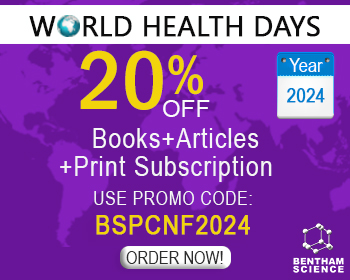Abstract
Background: This research tried to evaluate the chemical composition of the essential oil of Salvia limbata, and also bioactivity of essential oil and the plant extract. S. limbata is an aromatic plant with medicinal uses, such as analgesic, anti-inflammatory activities.
Methods: The essential oils of the flowers of Salvia limbata were obtained using a Clevenger-type apparatus, and its chemical composition was identified by chromatography methods. The study was also conducted to evaluate antioxidant and antibacterial activities of the plant extracts. For this purpose, the leaves and flowers of S. limbata were extracted using methanol and then fractioned by n-hexane and Ethyl Acetate (EtOAc). Total Phenolic Content (TPC), Total Flavonoid Content (TFC), Radical Scavenging Activity (RSA) and the Disc-Diffusion (DD) assay were run to study the bioactivity of the plant extracts.
Results: The oil was dominated by the oxygenated hydrocarbon of 5-methylene-2,3,4,4-tetramethylcyclopent- 2-enone (37.1%), oxygenated sesquiterpene of occidol (22.8%), and sesquiterpene hydrocarbon of β-bourbonene (12.1%). The EtOAc extract of the flowers showed the TPC with 66.2±0.62 mg GAE/g (mg of gallic acid equivalents per gram of extract) and RSA with IC50 of 17.96±0.54 μg/mL. Although the EtOAc extract of the leaves exhibited the highest TFC with 61.96±4.73 mg RuE/g (mg of rutin equivalents per gram of extract). The extracts inhibited the growth of Escherichia coli, Citrobacter frurdi, Pseudomonas aeruginosa, and Streptococcus pneumonia. The extracts were inactive against Staphylococcus coagulase, Enterobacter aerogenes, Acinetobacter baumannii, Serratia marcescens, and Klebsiella pneumoni.
Conclusion: According to the results, the plant extracts were potent agant in antioxidant activity.
Keywords: Salvia limbata, Lamiaceae, occidol, β-bourbonene, antioxidant activity, antibacterial activity.
[http://dx.doi.org/10.1016/j.indcrop.2014.06.038]
[http://dx.doi.org/10.1002/ptr.1451] [PMID: 15162368]
[http://dx.doi.org/10.2174/1573407213666170621074336]
[http://dx.doi.org/10.1089/jmf.2009.0060] [PMID: 20136437]
[http://dx.doi.org/10.1385/1592599559]
[http://dx.doi.org/10.14233/ajchem.2013.13851]
[http://dx.doi.org/10.1016/j.foodchem.2007.03.023]
[http://dx.doi.org/10.1016/j.indcrop.2015.07.053]
[http://dx.doi.org/10.1016/j.jff.2015.09.011]
[http://dx.doi.org/10.1080/0972060X.2015.1024447]
[http://dx.doi.org/10.1016/j.fct.2010.08.020] [PMID: 20732375]
[http://dx.doi.org/10.1016/j.sajb.2014.04.002]
[http://dx.doi.org/10.1080/10412905.2005.9698982]
[http://dx.doi.org/10.2174/1573407212666161014132503]
[http://dx.doi.org/10.2174/157340712799828205] [PMID: 22754426]
[http://dx.doi.org/10.1080/0972060X.2009.10643748]
[http://dx.doi.org/10.1007/s10600-008-0030-z]
[http://dx.doi.org/10.1016/j.indcrop.2016.06.025]
[http://dx.doi.org/10.1016/j.indcrop.2014.09.042]
[http://dx.doi.org/10.1016/j.indcrop.2010.03.003]
[http://dx.doi.org/10.1016/j.indcrop.2013.06.047]
[http://dx.doi.org/10.1016/j.indcrop.2012.04.002]
[http://dx.doi.org/10.3906/tar-1211-72]
[http://dx.doi.org/10.1016/j.indcrop.2012.08.029]
[PMID: 17604251]
[http://dx.doi.org/10.2174/1573407212666160426161112]
[http://dx.doi.org/10.1016/j.fct.2010.03.003] [PMID: 20211675]
[PMID: 24523760]



























